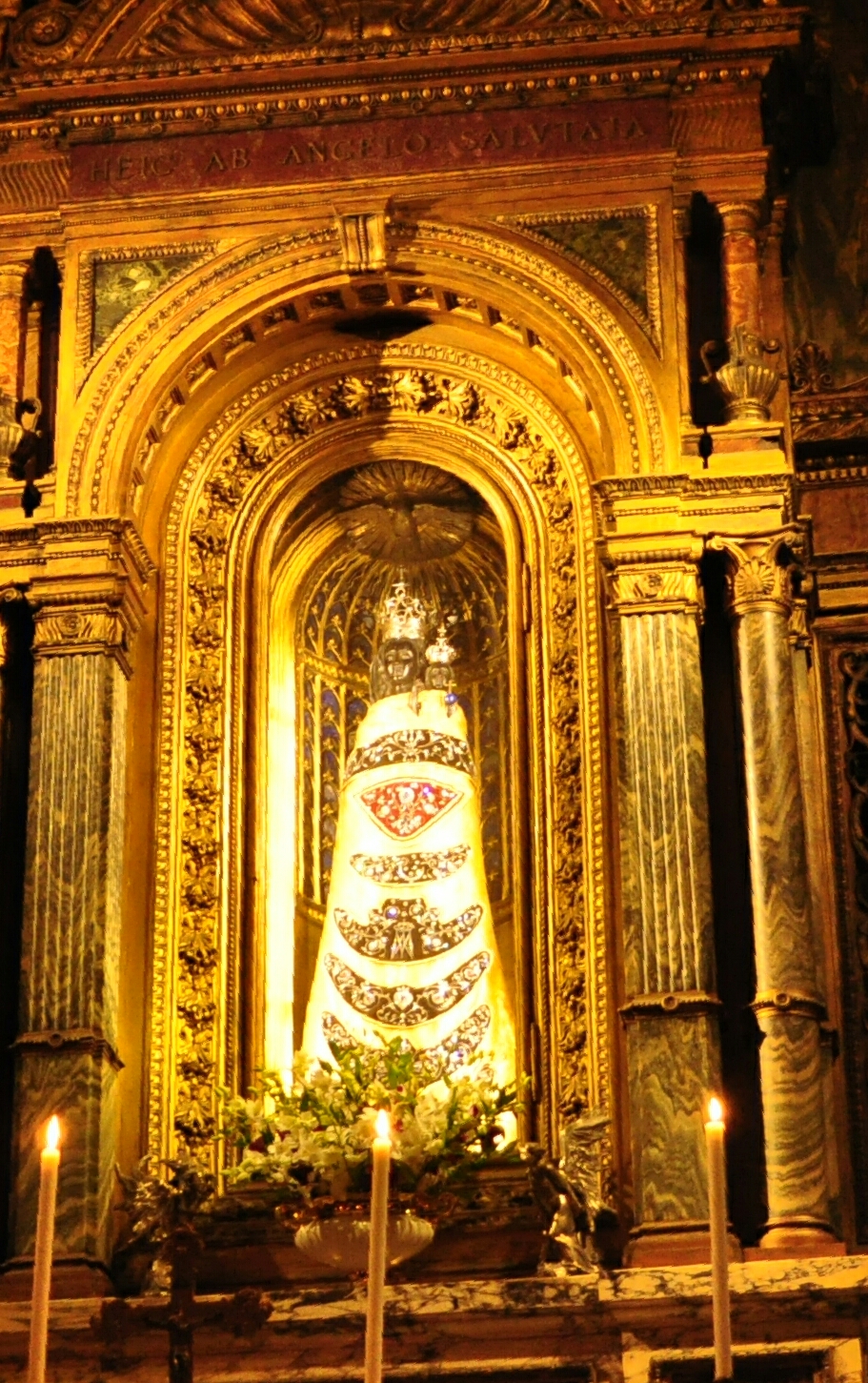|
The Basilica della Santa Casa - Basilica of the Holy House in Loreto, Italy :
10 December 2019
 The Basilica della Santa Casa or Basilica of the Holy House in Loreto, Italy is most definitely one of the greatest monumental relics of Christianity. It is also one of the most famous shrines dedicated to the Blessed Virgin Mary. The Basilica is built around the House of the Holy Family which is traditionally believed to have been transported by angels from Nazareth to Loreto in Italy in the year 1294. This is the house believed to be where the Annunciation by the angel Gabriel and the conception of the Incarnation took place and also later where the Holy Family lived in Nazareth. The title ‘Our Lady of Loreto’ is associated to this shrine.
The Basilica della Santa Casa or Basilica of the Holy House in Loreto, Italy is most definitely one of the greatest monumental relics of Christianity. It is also one of the most famous shrines dedicated to the Blessed Virgin Mary. The Basilica is built around the House of the Holy Family which is traditionally believed to have been transported by angels from Nazareth to Loreto in Italy in the year 1294. This is the house believed to be where the Annunciation by the angel Gabriel and the conception of the Incarnation took place and also later where the Holy Family lived in Nazareth. The title ‘Our Lady of Loreto’ is associated to this shrine.
History and Legend:
In the year 313, St. Helena, mother of the Emperor Constantine built a Basilica over the home of the Holy Family. In 1090, when the Saracens invaded the Holy Land, they plundered and destroyed all the Christian shrines including the Basilica. However, beneath the ruins, the house was later found to be intact. During the 12th century another Basilica was built over the house. In 1263, when the Muslims overpowered the crusaders, the Basilica was again destroyed but the house was again found to be intact under the ruins.
It is believed that in the year 1291, the house mysteriously disappeared from the site in Nazareth. That same year it was miraculously found on a plot of land in the town of Tersatto in Croatia by the local parish priest who was puzzled on seeing a house that appeared to have not been built on the land. He began praying about it and in a dream he saw the Blessed Virgin Mary who explained to him that that it was the house of the Holy Family. In the year 1294, the house again disappeared from Croatia and was first seen in Recanati, Italy and later finally rested in Loreto, Italy where it stands till date.
On its discovery, news about the miraculous house spread around and people flocked to the site to see the house of the Holy Family and pray. Several miracles were reported at the site. As people flocked to the site, it became imperative to ascertain the truth and special deputations were sent to Nazareth to determine the origins of the house. All the three deputations confirmed that the measurements of the house corresponded to the visible foundations of the house in Nazareth. Later in 1871, the mortar and stones from the house in Loreto were compared to those in Nazareth and found to be of the same composition. The house in Loreto does not have a foundation clearly indicating that it was not built there. There are only three walls resting on the site.
Present day:
Today the house is enshrined in a Basilica built on the site in the 15th century. Several Popes and Saints have visited the site since then. ‘Our Lady of Loreto’ is the title of the Blessed Virgin Mary with respect to this Holy House in Loreto. In the 1600s a Holy Mass and the Litany of Loreto was approved. The "Litany of Loreto" is one of the five litanies of the Blessed Virgin Mary, approved for public recitation by the Church. On 24 March 1920 Pope Benedict XV declared Our Lady of Loreto as the patron saint of air travellers and pilots based on the traditional belief that the house was transported by angels to Loreto.
 A statue made of cedar of Lebanon was commissioned after a fire in the Santa Casa in 1921 destroyed the original Madonna. It was granted a Canonical Coronation on 5 September 1922 by Pope Pius XI.
A statue made of cedar of Lebanon was commissioned after a fire in the Santa Casa in 1921 destroyed the original Madonna. It was granted a Canonical Coronation on 5 September 1922 by Pope Pius XI.
In October 2019 Pope Francis added the feast of Our Lady of Loreto, to be commemorated on December 10 and added to the universal Roman calendar.